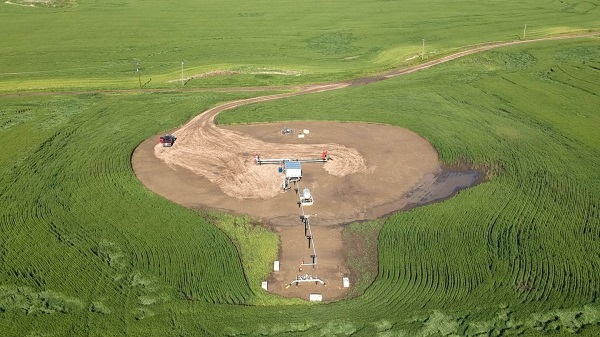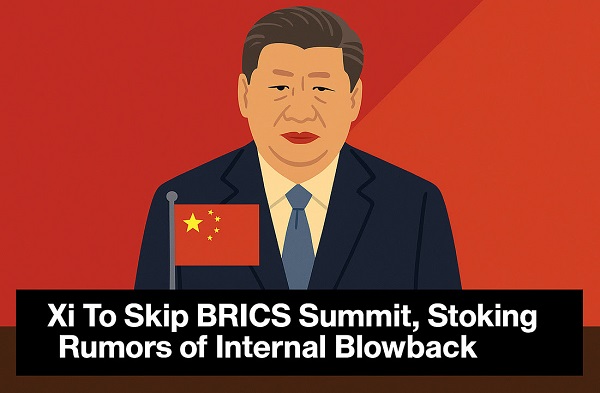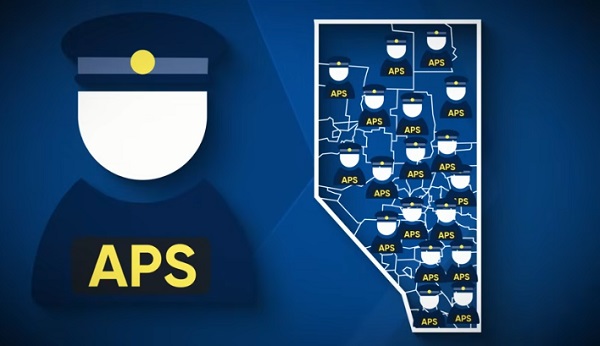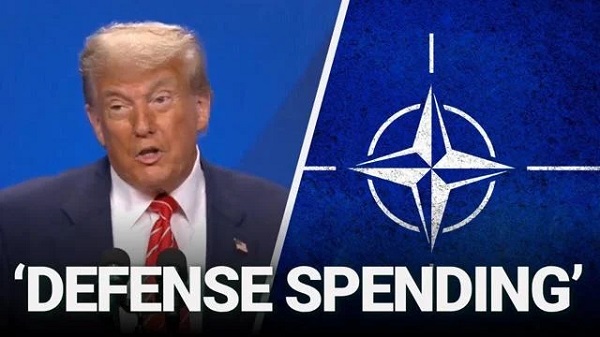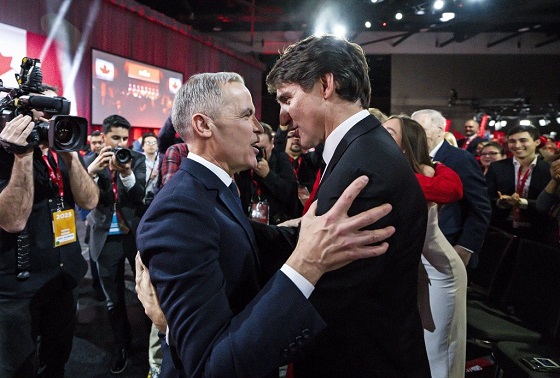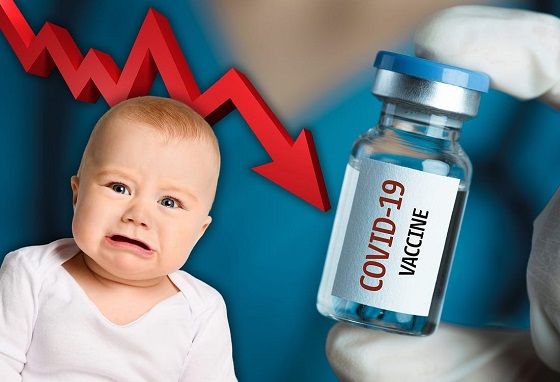Crime
Trudeau’s pro-transgender regime is a get-out-of-jail-free card for Canada’s most violent criminals
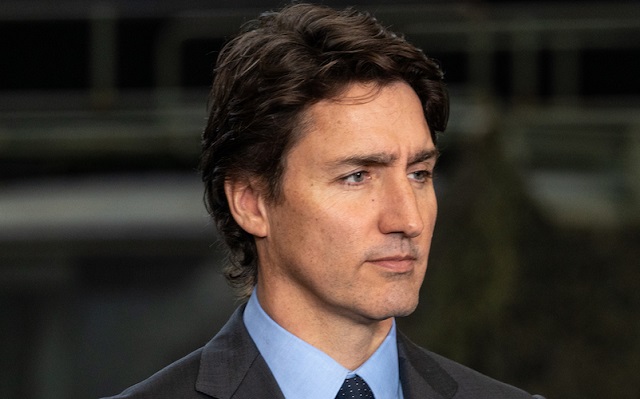
From LifeSiteNews
Canada’s most dangerous criminals are being sent to women’s prisons simply by identifying as such. This can only happen because the country is run by people like Justin Trudeau, who believes gender ideology with every fibre of his being.
You’ve probably heard plenty from Justin Trudeau and his progressive clones about conservative premiers “attacking” and “targeting” the so-called “LGBT community” for legislation protecting children from sex change surgeries. But you won’t hear a word about the victims of LGBT ideology – and you won’t hear a thing about the growing list of insanities inflicted on Canada by the policies they have passed and supported.
Consider the case of Adam Laboucan, who as a teenager brutally raped a 3-month-old infant and allegedly drowned a toddler – he was convicted only of the violent pedophilic assault, because he was less than 12 years old when he drowned the 3-year-old boy, and under Canadian law you must be at least 12 to be prosecuted.
Laboucan’s case – which LifeSiteNews reported on last year – was so disturbing that he became Canada’s “youngest designated dangerous offender.”
Now, according to The Canadian Press, Laboucan is “seeking escorted leave from prison to attend Indigenous cultural ceremonies in Vancouver.” You see, Adam Laboucan has changed his name. He is now known as Tara Desousa, and the CP obediently refers to him by his preferred pronouns, leading to ludicrous sentences such as this one:
Desousa, then named Adam Laboucan, was 15 years old in 1997 when she sexually assaulted an infant she was babysitting in Quesnel, B.C. The baby required surgery to repair the injuries.
Laboucan, of course, was not a woman when he attacked the infant and drowned the child. He is not a woman now, despite having obtained sex change surgeries since then (he is 43). He is considered so dangerous that B.C. Supreme Court Judge Victor Curtis imposed an indefinite sentence on him in 1999 because there was, in the view of the court, no foreseeable “time span in which Adam Laboucan may be cured.” The B.C. Court of Appeal affirmed the dangerous offender designation in 2002.
They did so for good reason. Expert psychiatrists stated that Laboucan exhibited everything from “transsexual to pedophilic tendencies.” He was given to self-mutilation and even self-cannibalism. He was promiscuous and volatile, threatening to kill a female guard and behaving so erratically that a 2010 parole review again affirmed his dangerous offender designation due to his problems with “gender identity, impulsive behavior, violence and sexual deviance.” But in 2018, he began to identify as a woman. As LifeSiteNews reported shortly thereafter:
In a 2021 brief to members of the House of Commons, incarcerated women’s rights advocate Heather Mason told a House Committee that numerous women prisoners had been subject to sexual harassment by males who call themselves females who are living in female prisons. Mason made special mention of Laboucan (Desousa) stating: “One of these women reported that while in the mother-child program, two transgender individuals with convictions for pedophilia, Madilyn Harks and Tara Desousa, would loiter near her and her child, making sexist and inappropriate antagonizing comments.” The person who calls himself Madilyn but was named Matthew has been labelled a serial pedophile with an “all-encompassing preoccupation in sexually abusing young girls.”
Note well: the reason one of Canada’s most dangerous criminals, a man with violent pedophilic impulses and a history of profound mental disturbance, can get sent to a women’s prison is because our country is run by people like Trudeau, who believes gender ideology with every fibre of his being.
Now, Laboucan – wearing his new female identity like a skin suit – has applied in Federal Court in Vancouver to attend a “healing centre for women” run by the Circles of Eagles Lodge Society, an Indigenous organization.
Laboucan’s most recent attempt at parole – in June 2024– was denied, with the Parole Board of Canada stating that that the victim of Laboucan’s assault and the family “have suffered pain, anxiety and anguish and long-term emotional impacts resulting from your offending. Each time you come up for parole, they are haunted by your offending and the damage you inflicted on their defenceless son/grandson.”
Of course, the government now expects you to believe that these crimes were committed by a woman – and the board did say that “escorted temporary absences” were “the next logical step in reintegration and gradual release,” despite the fact that he is “an undue risk to society.”
Laboucan’s Vancouver-based lawyer, Caroline North, declined to comment on the Federal Court application when asked by the Canadian Press.
Crime
National Health Care Fraud Takedown Results in 324 Defendants Charged in Connection with Over $14.6 Billion in Alleged Fraud
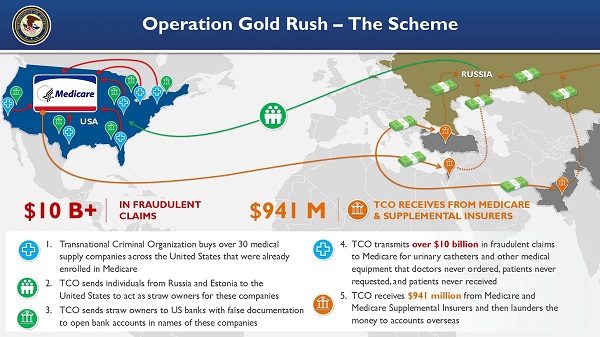
A 50-district dragnet uncovers transnational fraud, AI-driven deception, and systemic theft from Medicare, Medicaid, and U.S. taxpayers totaling over $14.6 billion
The Department of Justice announced Monday the outcome of the 2025 National Health Care Fraud Takedown, the largest coordinated enforcement action against health care fraud in U.S. history. Federal prosecutors have filed criminal charges against 324 individuals across 50 federal judicial districts and 12 State Attorneys General’s Offices, including 96 licensed medical professionals—among them doctors, nurse practitioners, and pharmacists. The defendants stand accused of orchestrating fraudulent schemes amounting to more than $14.6 billion in intended losses to Medicare, Medicaid, and other federally funded programs.

This historic enforcement action more than doubles the previous national record of $6 billion. As part of this effort, federal and state authorities have seized over $245 million in cash, luxury vehicles, cryptocurrency, and other high-value assets. The Centers for Medicare & Medicaid Services (CMS) separately reported that it successfully prevented more than $4 billion in fraudulent payments in the months leading up to the Takedown. CMS also confirmed that it suspended or revoked the billing privileges of 205 providers linked to fraudulent activity. In the civil domain, federal agencies filed actions against 20 defendants tied to $14.2 million in alleged fraud and finalized civil settlements with an additional 106 defendants, totaling $34.3 million in recovered funds.
The Takedown was led by the Health Care Fraud Unit of the DOJ Criminal Division’s Fraud Section and carried out in close coordination with U.S. Attorneys’ Offices nationwide, the Department of Health and Human Services Office of Inspector General (HHS-OIG), the Federal Bureau of Investigation (FBI), the Drug Enforcement Administration (DEA), and multiple state law enforcement agencies. Medicaid Fraud Control Units in 18 states also played a central role in investigating and prosecuting the cases.
In remarks accompanying the announcement, Secretary of Health and Human Services Robert F. Kennedy Jr. emphasized that the agency would aggressively work with law enforcement to eliminate the “pervasive health care fraud that drove up costs and harmed patients under the former administration.” Attorney General Pamela Bondi echoed the urgency, calling the action “justice delivered to those who steal from taxpayers and endanger lives.” Matthew R. Galeotti, head of the Justice Department’s Criminal Division, underscored the gravity of the crimes targeted, noting that fraudulent schemes often lead not only to financial losses but also to direct patient harm, including medically unnecessary procedures and worsened addiction outcomes.
FBI Director Kash Patel emphasized that this Takedown represents the largest in the bureau’s history, highlighting the theft of more than $13 billion from federal health programs. Acting Inspector General Juliet T. Hodgkins of HHS-OIG described the scale of harm as unprecedented and reaffirmed the agency’s commitment to safeguarding the public.
Among the most significant components of this national operation was Operation Gold Rush, which uncovered a sophisticated transnational conspiracy responsible for over $10 billion in fraudulent Medicare claims. The scheme was orchestrated by foreign nationals who, acting as a coordinated criminal enterprise, acquired more than 30 medical supply companies across the United States. These companies had already been enrolled in Medicare, and were then used to funnel false claims for urinary catheters and other durable medical equipment. Stolen identities of over one million Americans were used to submit these claims, which had not been requested by patients, nor ordered by physicians.
The conspiracy relied on straw owners sent from Russia and Estonia to the U.S., who were directed by co-conspirators communicating through encrypted channels. Using fraudulent documentation, these straw owners opened U.S. bank accounts for laundering proceeds. Though the organization submitted over $10.6 billion in claims, CMS successfully blocked most of the payments. Only approximately $41 million reached the conspirators via Medicare, but approximately $900 million was disbursed by Medicare supplemental insurers before the fraud was detected.
Four individuals were arrested in Estonia and eight others were apprehended at major U.S. airports and border crossings as they attempted to flee. Law enforcement seized approximately $27.7 million in fraud proceeds from this operation.

Federal prosecutors filed related charges in five districts: the Central District of California, the Middle District of Florida, the Northern District of Illinois, the District of New Jersey, and the Eastern District of New York.
In a separate scheme centered in Illinois, the Department brought charges against five individuals, including two executives from Pakistani marketing firms, who used artificial intelligence to generate fake audio recordings of Medicare beneficiaries purporting to consent to receive medical equipment. This fraudulent data was sold to laboratories and equipment suppliers, which used it to file $703 million in false claims. Approximately $418 million was ultimately paid out on these claims, and the government has so far seized $44.7 million in related assets. The fraud involved not only AI-based deception but also the illegal sale and laundering of stolen personal health information.
Another case exposed a billing company executive based in Pakistan and the United Arab Emirates who conspired with addiction treatment centers to submit approximately $650 million in fraudulent claims to Arizona Medicaid. Some services billed were never rendered, and others were so deficient as to provide no therapeutic value. The operation targeted vulnerable individuals, including members of Native American tribes and the homeless. Kickbacks were paid for patient referrals, and the executive used at least $25 million in illicit funds to purchase a $2.9 million home in Dubai.

The Department also charged 49 defendants in connection with over $1.17 billion in fraudulent claims tied to telemedicine and genetic testing. In one Florida case, an owner of both telemedicine and durable medical equipment companies orchestrated a $46 million scheme involving deceptive telemarketing campaigns that generated unauthorized genetic testing and equipment claims. The Department continues to prioritize cases involving telehealth-based fraud, which often exploits unwitting patients through misrepresented or manufactured consent.
Prescription opioid diversion was another central focus of the Takedown. A total of 74 defendants, including 44 licensed medical professionals, were charged across 58 criminal cases for illegally distributing more than 15 million opioid pills. One Texas pharmacy alone was responsible for over 3 million of these pills, which included highly addictive substances such as oxycodone, hydrocodone, and carisoprodol. The DEA concurrently announced 93 administrative actions to revoke licenses and registrations of pharmacies and providers implicated in the unlawful handling of controlled substances.
Other cases include a $28.7 million scheme in Tennessee involving medications falsely billed to the Federal Employees’ Compensation Fund, where prescriptions were neither authorized by physicians nor dispensed as claimed. In separate indictments filed in Washington and California, medical providers were charged with stealing fentanyl and hydrocodone intended for pediatric patients under anesthesia.
The geographic scope of the Takedown was vast. In total, 189 federal cases were filed across all 50 federal judicial districts, and 91 state-level cases were brought in 12 states by participating Attorneys General. This unprecedented coordination underscores the national impact and bipartisan support for rooting out fraud in American health care systems.
To enhance ongoing efforts, the Department also announced the establishment of a new Health Care Fraud Data Fusion Center.

This joint initiative brings together specialists from the DOJ’s Health Care Fraud Unit, HHS-OIG, FBI, and CMS to leverage cloud computing, artificial intelligence, and large-scale data analytics to detect emergent fraud patterns. The Fusion Center aligns with Executive Order 14243, “Stopping Waste, Fraud, and Abuse by Eliminating Information Silos,” which mandates interagency cooperation and data-sharing to reduce redundancy and increase efficiency in enforcement.
Principal Assistant Deputy Chief Jacob Foster, Assistant Deputy Chief Rebecca Yuan, Trial Attorney Miriam L. Glaser Dauermann, and Data Analyst Elizabeth Nolte coordinated this year’s Takedown from within the DOJ’s Health Care Fraud Unit. Prosecutors from the National Rapid Response team and regional Strike Forces in 27 districts led casework alongside U.S. Attorneys’ Offices and 18 state Medicaid Fraud Control Units. Additional support came from the Department of Labor, VA-OIG, IRS Criminal Investigation, Homeland Security Investigations, the Defense Criminal Investigative Service, the Office of Personnel Management, the United States Postal Service OIG, and numerous other federal and local agencies.
Image sources: US DOJ
Crime
Suspected ambush leaves two firefighters dead in Idaho

Quick Hit:
Two firefighters were killed and another wounded Sunday after a gunman opened fire on first responders tackling a blaze near Coeur d’Alene, Idaho. The shooter was later found dead, and authorities believe the fire may have been set to lure crews into an ambush.
Key Details:
- The ambush began around 2 p.m. local time as fire crews arrived at a brush fire and were met with sniper-style gunfire from a wooded area.
- SWAT teams located the deceased suspect roughly five hours later, with a weapon nearby. His identity has not yet been released.
- The Kootenai County Sheriff said the ongoing fire could not be addressed during the gunfight, calling the attack a “heinous direct assault” on first responders.
Diving Deeper:
A deadly ambush on Sunday afternoon left two Idaho firefighters dead and a third injured after they were shot while attempting to contain a brush fire on Canfield Mountain. The surprise attack reportedly began around 2 p.m., when bullets suddenly rained down on emergency crews from hidden positions in the wooded terrain near Coeur d’Alene.
Authorities now believe the blaze may have been deliberately set as bait. Kootenai County Sheriff Bob Norris described the situation as “an active sniper attack,” saying the scene quickly escalated into chaos with gunfire coming from multiple directions.
“We don’t know if there’s one, two, three or four [shooters],” Norris said in an early evening press conference. “I’m hoping that someone has a clear shot and is able to neutralize [the suspect], because they’re not showing any signs of surrendering.”
Roughly five hours after the first shots were fired, SWAT officers found a body next to a firearm along the Canfield Mountain Trail. Authorities have not confirmed whether the individual was the sole assailant, nor have they publicly identified the person. The FBI, along with state and local agencies, had been deployed to the scene to assist with the operation.
The two firefighters who died have not yet been named. The third, who sustained a gunshot wound, was transported to Kootenai Health and remains hospitalized. His current condition is unknown.
The firefight effectively halted efforts to contain the brush fire, which remained active late into Sunday. “It’s going to keep burning. We can’t put any resources on it right now,” Norris said during the standoff. Shelter-in-place orders were issued for the surrounding area, including the popular Canfield Mountain Trailhead, but those restrictions were lifted after the suspect was found dead.
Idaho Governor Brad Little reacted to the tragedy on social media, calling the ambush “a heinous direct assault on our brave firefighters.” He added, “Teresa and I are heartbroken. I ask all Idahoans to pray for them and their families as we wait to learn more.”
Federal and local officials are continuing to investigate the incident, including the origins of the fire and whether additional suspects may have been involved.
-
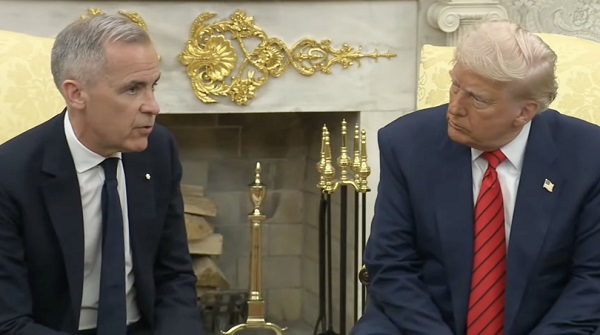
 Business2 days ago
Business2 days agoCanada Caves: Carney ditches digital services tax after criticism from Trump
-

 Crime2 days ago
Crime2 days agoSuspected ambush leaves two firefighters dead in Idaho
-

 Business2 days ago
Business2 days agoMassive government child-care plan wreaking havoc across Ontario
-

 Alberta1 day ago
Alberta1 day agoAlberta judge sides with LGBT activists, allows ‘gender transitions’ for kids to continue
-

 Crime23 hours ago
Crime23 hours agoNational Health Care Fraud Takedown Results in 324 Defendants Charged in Connection with Over $14.6 Billion in Alleged Fraud
-
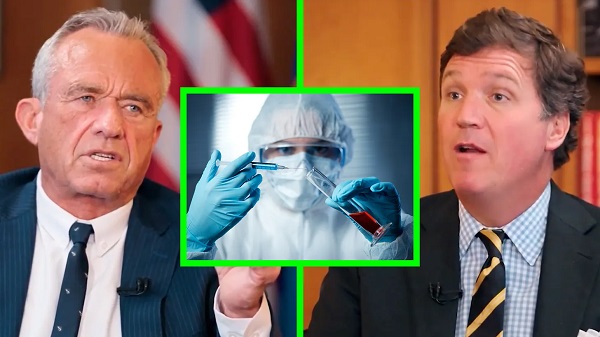
 Health23 hours ago
Health23 hours agoRFK Jr. Unloads Disturbing Vaccine Secrets on Tucker—And Surprises Everyone on Trump
-
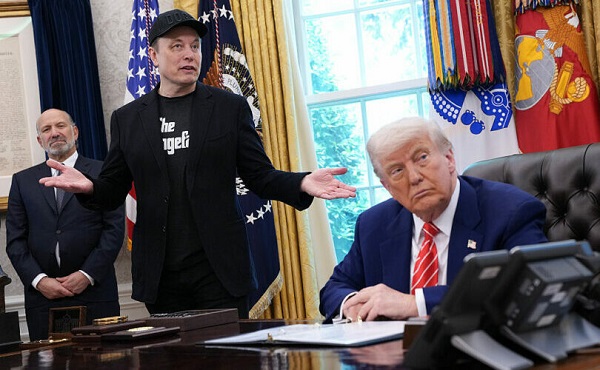
 Business12 hours ago
Business12 hours agoElon Musk slams Trump’s ‘Big Beautiful Bill,’ calls for new political party
-
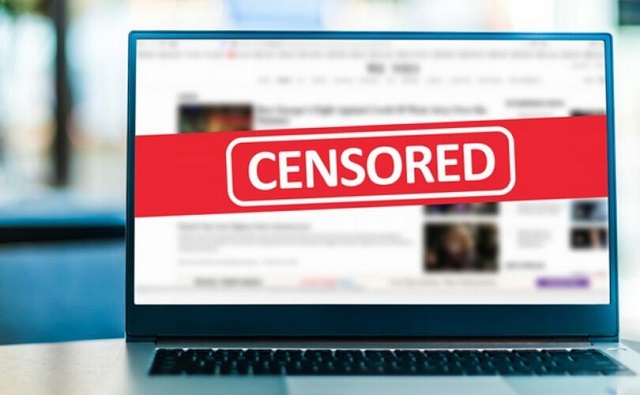
 Censorship Industrial Complex12 hours ago
Censorship Industrial Complex12 hours agoGlobal media alliance colluded with foreign nations to crush free speech in America: House report

 By
By 